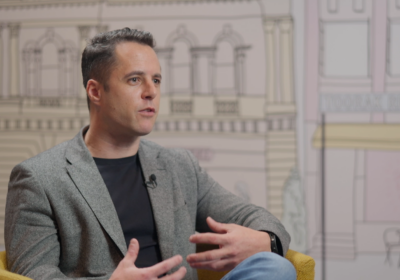Allow me to bust two marketing myths that hold campaign managers back from high performing marketing campaigns. Then I’ll show you how the mythbuster can lift ROI 30x.
The following two myths are related; the first one leads to the second.
Myth 1: You can’t accurately measure the effects of offline marketing channels.
Myth 2: Traditional offline media channels like TV and radio can’t operate to a pay-per-lead basis.
I’ll be blunt about it: If you believe these myths, they’re either holding you back or bleeding you dry. Let me tell you why.
It’s long been common for marketers to draw a line between online and offline channels. And sure, there are valid and important reasons for doing so. But measurement is no longer one of them.
It’s why there’s a friction between many large companies and the TV and radio desks: large companies today are demanding performance deals; that means some variant of pay per lead. Traditional media buying agencies typically responsible for utilising these channels normally balk at this, shaking their heads. They don’t have the data or the models to calibrate the true effectiveness of their efforts.
Once upon a time that was a fair response. Now it’s pure myth. Today it is possible for traditional advertisers to understand their return on investment – down to the dollar. Sophisticated marketing attribution algorithms can indeed accurately measure the performance of offline channels.
The Mythbuster: Attribution
So what is attribution?
Attribution is a very broad term. It can mean a number of things depending on the context. For most marketers, it means simply finding out which marketing channels contributed to a specific outcome.
Today it’s not uncommon to be using up to 40 online channels, and a user is likely to hit touchpoints across many different channels in the same journey. Imagine the typical visitor who signs up for your services online. The sign-up is usually the conclusion of a long journey involving Google searches, Facebook ads and perhaps even multiple trips to your website.
This set of touchpoints closes at the point of the desired action, known as the conversion. It’s this complete set of interactions that must be subjected to data attribution, a process which determines the value of each touchpoint.
The challenge: to work out the channels of most utility. Those with the right mixture of scalability, ease of use, and above all, ROI.
Lifting ROI by 30x: A real case study
I work with clients that run cinema, press, radio and TV. They all want to understand how each channel affects sales: which channel performs the best, and which geographic regions deliver the best results? Once we understand this, we can optimize their channel mix to maximize their return on investment.
In one case, we ran a set of ads over a spread of times and channels with a small budget. Concurrently the attribution model we ran was able to attribute incoming leads to two TV time segments.
Empowered by the data, we confidently advised our client to take a $500K bank loan and invest it into two time segments. Years ago such a move would have been a pure punt. But this was no punt at all. It was pure measurement.
And the result? A revenue increase of $5 million to $20 million based on exploiting the information gained via attribution with further ads. Attribution led to a 30 times return on investment!
Choosing the right attribution model
Currently there are many attribution models that compete against each other for mainstream adoption. Some use very simple fixed computations like last-touch, first-touch, and position-based.
Some use more complex algorithms, integrating the Shapley value, multiple linear regression, machine learning, and more. We don’t need to go into this in too much detail. Simply put, the more advanced models integrate a multitude of factors with more sophisticated theoretical techniques, proven over decades of research.
Our experience at Ebex tells us that there is no such thing as a one-size-fits-all approach. For many of our clients who use a handful of online channels, last touch or first touch suffice; the difference between the two is often less than 5%.
However, as soon as you enter the offline world, you need the algorithmic approaches. If you are running TV, radio, press, cinema or similar channels you should definitely be using an algorithmic approach to attribution.
Attribution is the sniper rifle that lets you target the right channels and hit them. There’s no longer any need to shoot in dark, or hold your fire in confusion.
The old myths are busted. The reality is that switching from traditional media agencies to data attribution agencies will drastically increase ROI. And more: companies now have the power to demand accurate insights about which channels their conversions are coming from and put concrete ROI figures on these channels.
If you’re in Australia and want to hear more, join WP Engine and Ebex for breakfast in Melbourne June 6 to discuss best practices to build reliable marketing data, including strategies, ideas and research. Register here.





Join the conversation